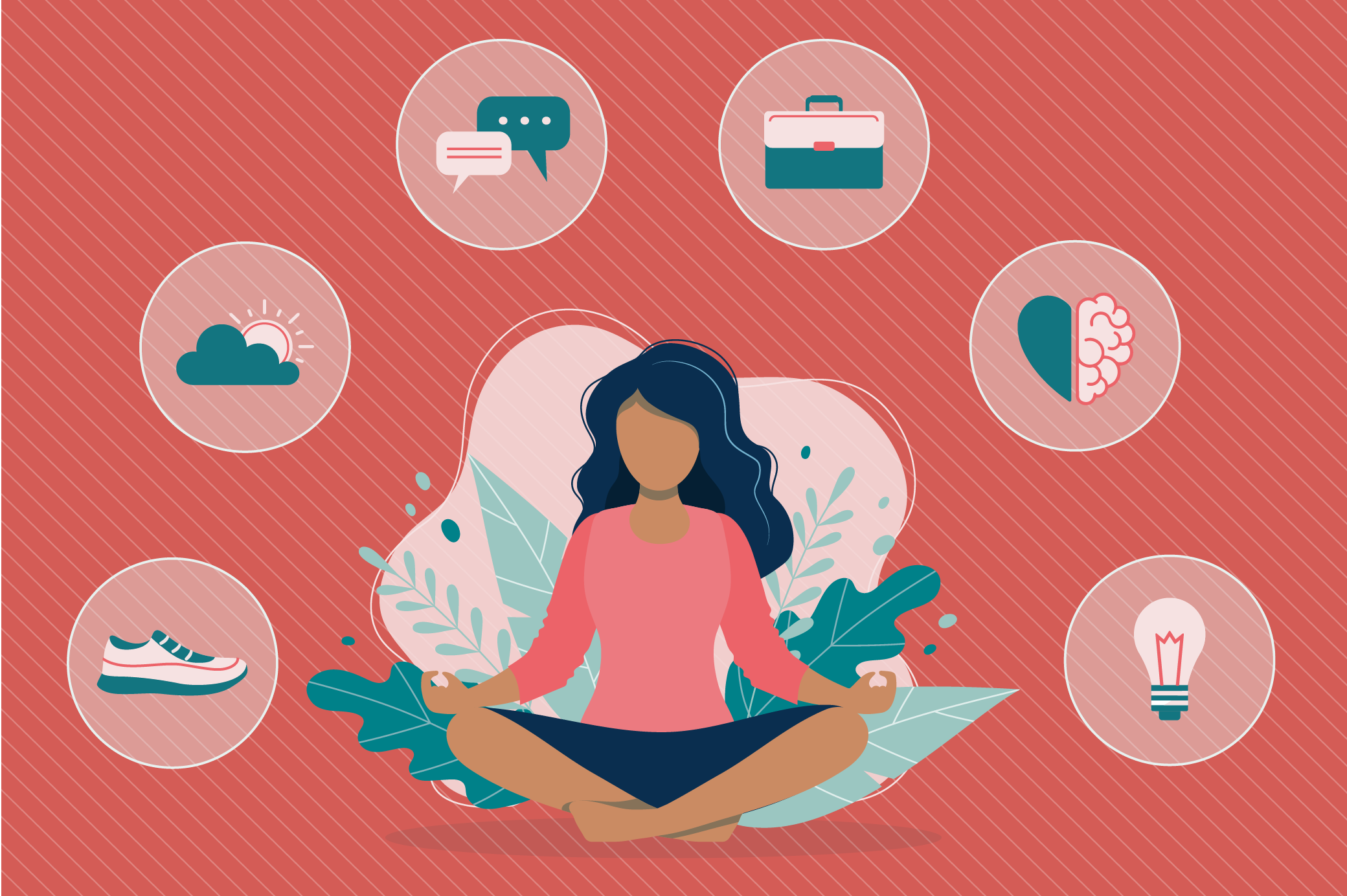By Liz Hay, SWHR Communications Intern
It’s possible to live your best life, even with migraine. SWHR’s Living Well with Migraine Toolkit is designed to help people with migraine on their wellness journey with expert-vetted information across six key areas: physical, emotional, environmental, work/school, social, and intellectual wellness. Members of SWHR’s Migraine Program who helped create the toolkit joined SWHR recently for a webinar on how people with migraine can integrate wellness practices into their daily lives. View the recording.
Migraine is a common and disabling neurological disease that affects 18% of women in the United States and is three times more common in women than men. Patient advocate Karen T. Smith emphasized: Migraine is not your fault — do not be ashamed to seek help.
“Living with migraine or any other chronic illness is hard. It is a painful, unpredictable, debilitating disease,” said Dawn Buse, PhD, clinical professor of neurology at Albert Einstein College of Medicine. “We can’t always control what happens to us, but we can control how we react to it.”
In addition to seeking medical treatment, effectively managing migraine often requires wellness strategies and behavioral interventions. Buse highlighted three scientifically supported behavioral therapies for migraine prevention: biofeedback, cognitive behavioral therapy (CBT), and relaxation training. “These are nice therapies to consider at any point in your life and the skills you learn from them you can take forward with you,” she said.
Personal lifestyle choices are also a critical aspect of living well with migraine. Focusing on the “SEEDS” of physical wellness — sleep, eat, exercise, drink, stress — can help to manage migraine disease, said Jelena Pavlović, MD, PhD, a neurologist and headache specialist at Montefiore Headache Center. “These are the factors that have been shown again and again to play a role in migraine,” she said. “You know your body best and what works for you.”
Migraine is the second leading cause of missed days at work. However, requesting accommodations at work such as lighting adjustments or a fragrance-free policy may help manage potential environmental triggers, Pavlović said. One of the silver linings of the COVID-19 pandemic, she noted, is patients who are fortunate enough to be able to work from home report experiencing fewer migraine attacks because they can better control their home environments compared to work or school. Keeping a headache diary to track attacks can help you better understand potential migraine triggers, communicate them to your provider, and target your wellness efforts in those areas.
Migraine can also affect your social relationships, so talking to loved ones about migraine is important. “I want to remind you that as a patient you are in the driver’s seat here,” Smith said. “You decide how much and what kinds of details to share.”
By communicating your migraine experience, you can guide your friends and family to the kinds of support that you need, she said. She also shared tips on how to prepare for instances when migraine attacks may force you to cancel or miss events and how to manage the expectations of family and friends.
Becoming a patient advocate can be a meaningful way to take control of your condition and achieve intellectual wellness. The first step of patient advocacy is advocating for your own health with health care providers and approaching your treatment as a partnership with your doctor, said Jaime Sanders, patient advocate and founder of The Migraine Diva blog.
“As a woman of color, I have had my pain just completely ignored. … I’m constantly having to validate my own experience before I get any treatment,” Sanders said. “This is a barrier that many people experience and it creates a level of medical trauma.”
Advocacy can help you forge connections with other migraine patients and develop a supportive community. “Dedicating my life to migraine patient advocacy has given my pain a purpose,” Sanders said. You can start small by sharing your story on social media or go big by attending a national event like Headache on the Hill, an annual advocacy event in Washington, D.C., organized by the Alliance for Headache Disorders Advocacy.
Listen to the webinar recording here and find more information about resources and techniques to live well with migraine in SWHR’s Living Well with Migraine Toolkit.
